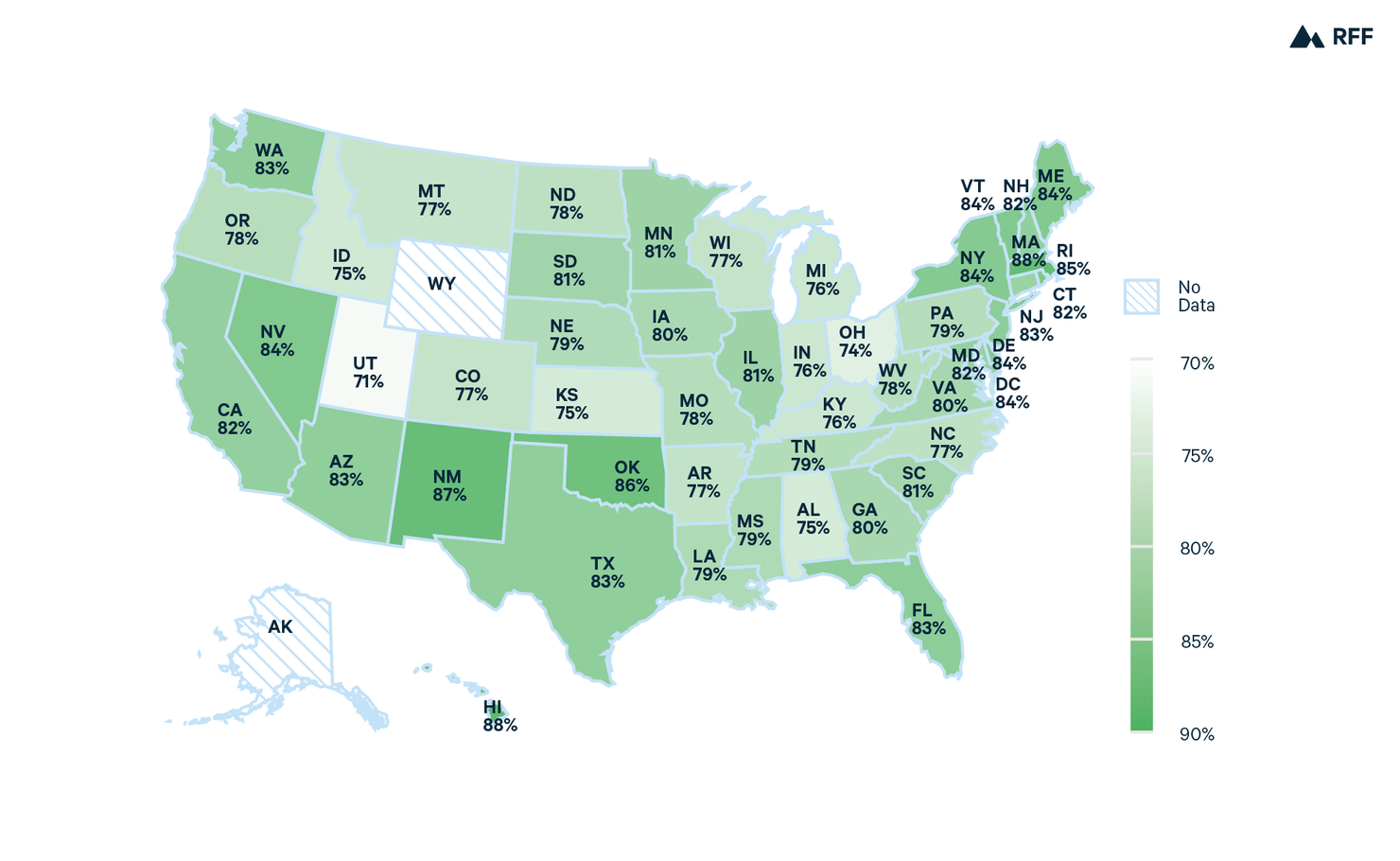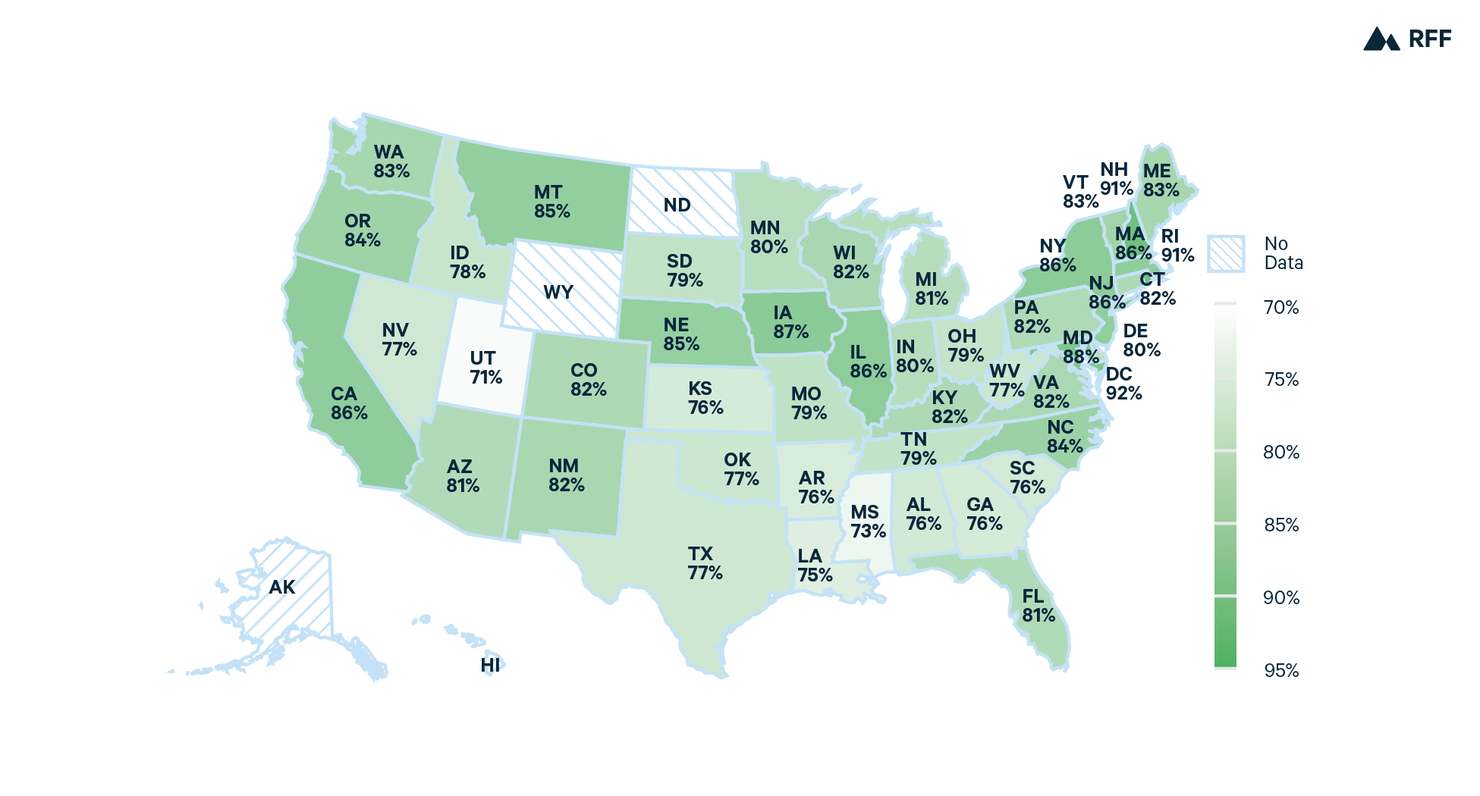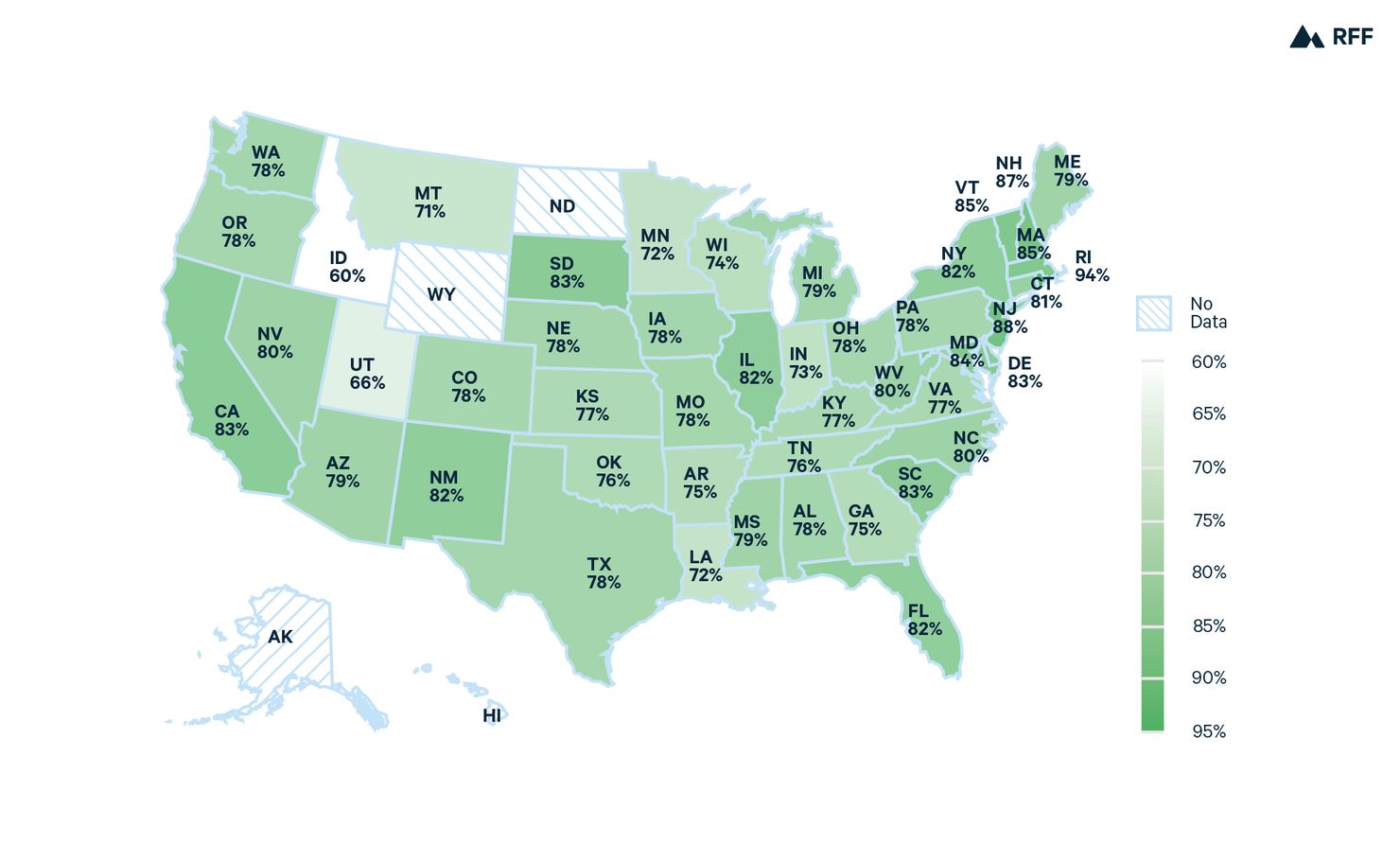
North and South, rural and urban–the United States is a complex mix of cultures, mindsets, and life experiences. And, as a new report by researchers at Stanford University, Resources for the Future, and ReconMR illustrates, those state-by-state differences affect climate attitudes and opinions.
The report is the latest installment of Climate Insights 2020, a seven-part series that reveals American beliefs, attitudes, and opinions on climate change and mitigation policies. The latest installment combines data from 27,661 respondents into a single dataset, then separates those data by state. Through this unique formulation, the report reveals state and regional opinions on climate change and their potential impacts on voting just days ahead of the presidential election.
As well as assessing where each state stands on a variety of climate-related issues, the report explains variation between states using indicators ranging from state-level politics to typical temperatures to residential energy prices.



Top Findings
- The majority of residents in all analyzed states hold “green” opinions–for example, more than 70% of residents in all states believe that climate change has occurred.
- At least 60% of people in all analyzed states believe that climate change will be a serious problem for the United States and world.
- The “issue public”–the people who consider climate change extremely personally important and vote based on the issue–varies from state to state. In Rhode Island, 33% of people care deeply about climate change, while in South Dakota only 9% do so.
- People in states that conferred more votes to President Trump in the 2016 election demonstrated a lower level of acceptance of the fundamentals of climate change and reduced support for specific policies to mitigate it.
- The larger the majority expressing “green” opinions on climate change, the more likely their US congressional representatives were to vote for “green” policies. The more of a state’s population is passionate about the issue, the more likely representatives are to vote for those policies.
“These data provide strong signals to many policymakers about how their constituents would like them to vote on legislation related to global warming,” report coauthor Jon Krosnick said. “With just over a week until the presidential election, these findings document the likely role that climate will play in voting decisions from coast to coast.”
The Climate Insights 2020 interactive data tool also allows users to explore the data in greater depth.
The final report installment in this series will be a synthesis of the six installments. Previous ones have focused on overall trends, natural disasters, climate policies, partisan breakdowns of those policies, and electric vehicles.

